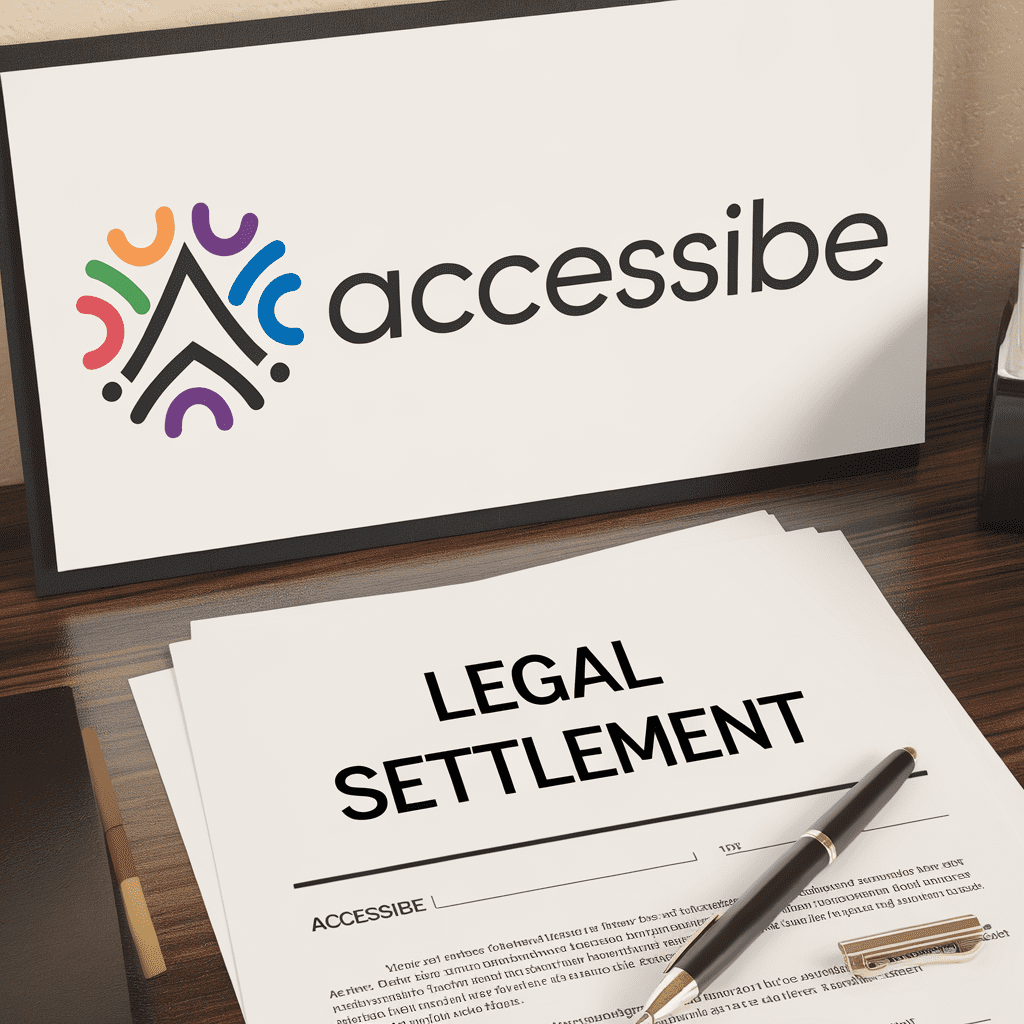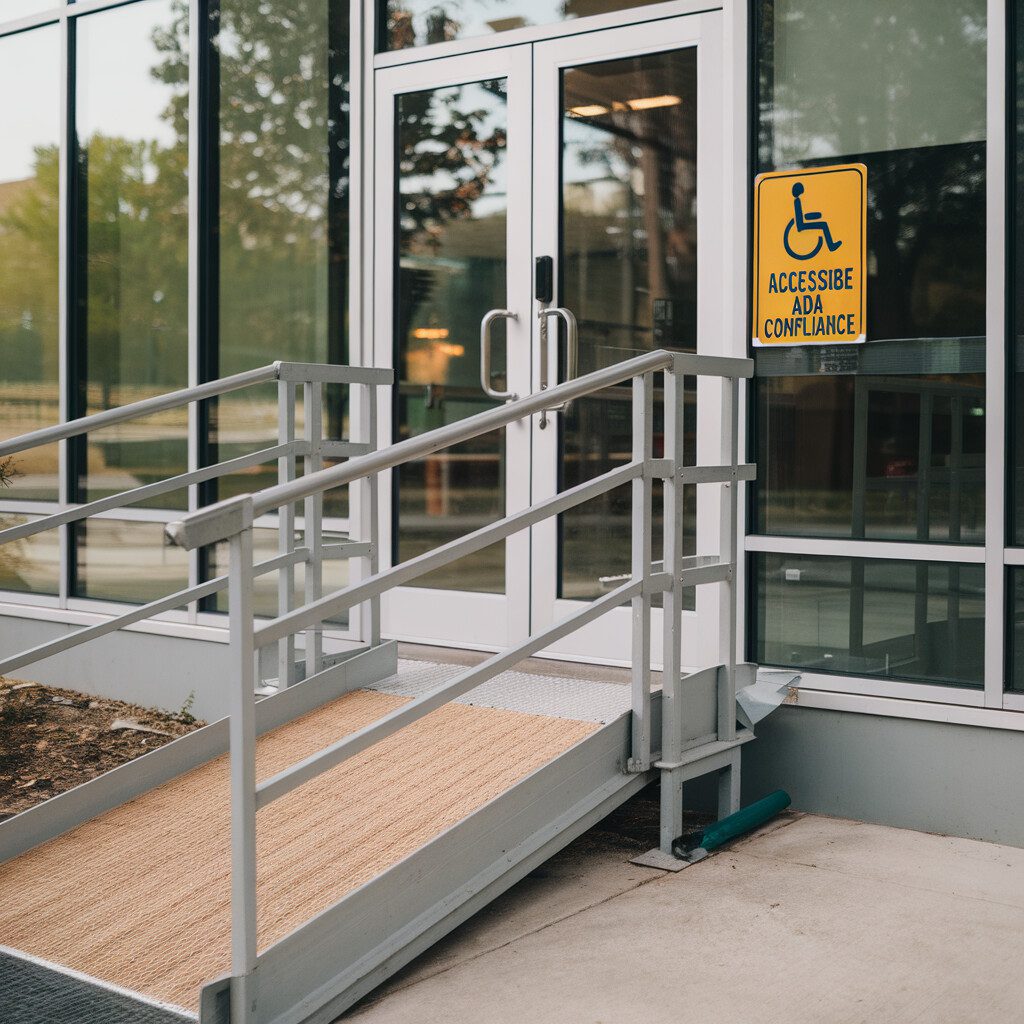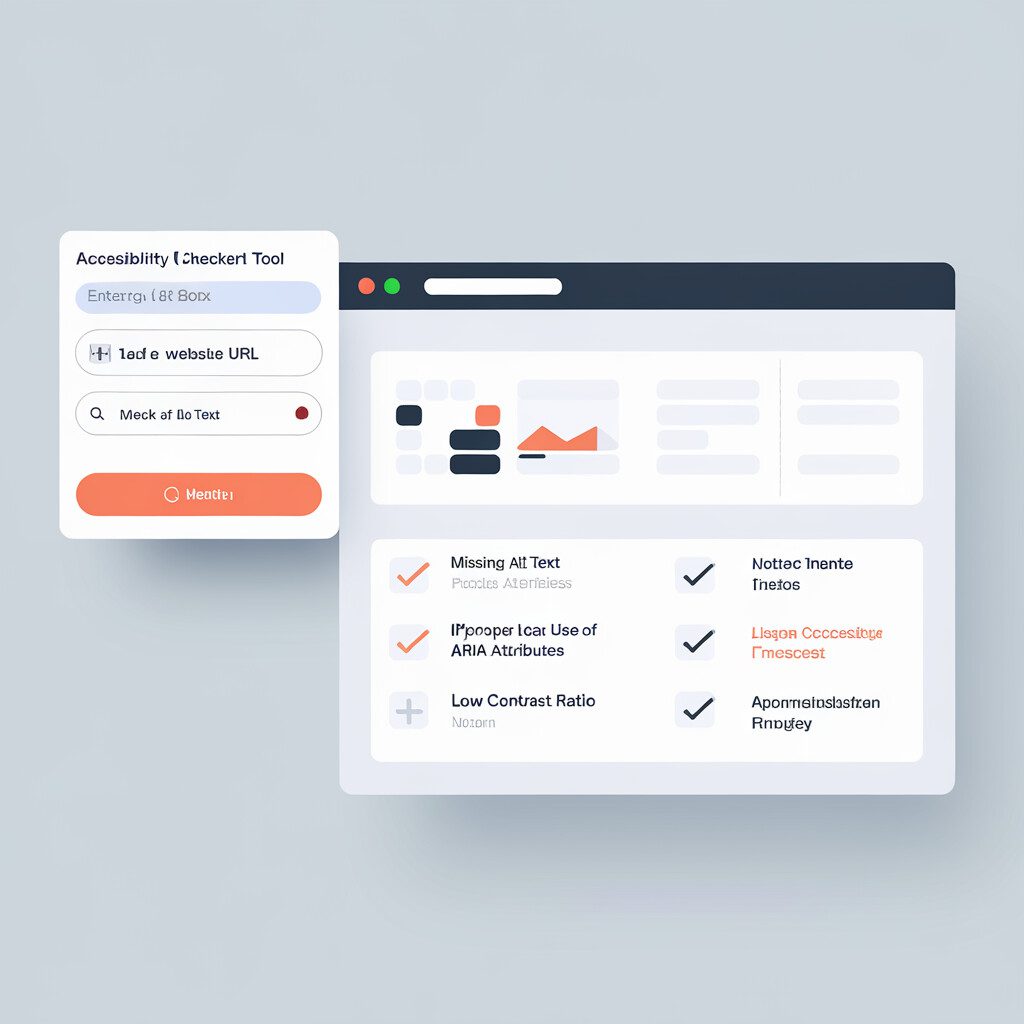
Hey there, internet explorer—I see you've opted to take a detour off the beaten path and meander into the riveting narrative that is the "AccessiBe legal settlement". Suit up! This won’t be your usual Sunday drive. Scenic though the tech landscape may be, even its sunniest meadows have their fair share of thistles. After all, cultivating an accessible and user-friendly digital environment requires wrestling with prickly issues occasionally—like an eyebrows-raising legal kerfuffle for example.
In our campfire talk today (passed the s'mores, will ya?), we’ll uncover not just a tale but an intricate depiction of legitimacy, capability and resolution. In translating ‘thorny accessibility problems’ language into ‘everyone’s-a-winner’ dialect, it’s like turning ‘rush-hour traffic’ into ‘Sunday drive’. See what we did there?
So, fancy a deep-dive into the ebb and flow of one company’s adventure navigating the labyrinth of legal norms in pursuit of inclusive web accessibility? Together, let’s delve into AccessiBe's grinding battle, the strategic left-turns and hairpin bends they took en route, and where it all guided them eventually. Embedded in this intriguing tale are crucial lessons about equal access and innovative solutions to complex challenges that can light our own paths forward.
Still with us? Great! Buckle up your proverbial safety belts—like we said, it’s more than a Sunday drive out here. Shall we get started?
Background of AccessiBe Legal Settlement

Building on the insights shared earlier, let's dive into the whirlpool of the AccessiBe legal settlement – a critical turn of events in the realm of web accessibility. Now imagine this – you are a business striving to stay complaint under COVID pressures, when, out of the blue, come legal shockwaves caused by one popular tool – AccessiBe.
The trouble started brewing when users encountered stumbling blocks in document access and a series of usability issues laced with poor alt text quality thrown into the mix. This was not anyone's idea of a cakewalk, was it?
AccessiBe promised to make websites more user-friendly and compliant with WCAG guidelines; unfortunately, what seemed like a knight in shiny armor for web developers ended up in challenging waters due to these aforementioned complaints.
The courtroom saw the twist and turns as website owners faced accusations, all revolving around an inadequate contrast ratio that made reading nearly impossible for low-vision visitors! Ouch! Talk about turning from a hero to a stumbling block overnight, right?
This kerfuffle resulted in the AccessiBe legal settlement, and just like spilling hot coffee on your laptop during an important virtual meeting, they had no choice but to face the repercussions and cleanup promptly. Notably, AccessiBe took the concern further and is working thoroughly to ensure such problems don't echo in the future. Intriguing isn't it, how failure can be a cruel yet powerful teacher?
Pulling these lessons into our stride, we can take thoughtful initiatives driving a much-needed change for a digitally inclusive world. So next time you hear about 'Accessible PDFs' or 'Contrast Ratio,' remember these are more than buzzwords, they're the key components for providing equal internet access to all individuals. After all, isn’t that worth striving for?
Challenges Faced in the Legal Battle
Clutching the reins in our exhilarating accessibility journey, it certainly was no summer picnic incorporating accessibility/CRGs (WCAGs and AIIs) into our compass, especially when it came to AccessiBe legal settlements. To understand the frustrations that can spring from inaccessible websites, it's time to jiggle the grey cells with a real-world example.
Our case revolves around a technologically driven solution, AccessiBe, embroiled in a fascinating labyrinth of legality bred by various disputes. Real people plagued by real-life issues found themselves chest-deep in problems. Their dismay has illustrative power, casting light on the practical difficulties faced by those who crave the Web's treasures but are hindered by unfriendly interfaces.
We could liken this tangle to an orchestrated piece of music minus an adequate contrast ratio—an opus less harmonious than we'd appreciate, giving us hints without delivering the fully resonant, evocative range needed to really seduce the ears—rather like an intricate plan marred by minor yet significant fading colors. Imagine struggling to muddle through auditory analogies when one doesn't have access to the entire sensory spectrum!
Likewise, striving for optimal usability and implementing ARIA controls while colorfully painting accessible alt text creates an enforced world full of nuances for users with visual impairment. A situation akin to straining at a blurry Impressionist painting and still not discerning what exactly we're supposed to make of its bloody nuances, right?
Just unpack how both circumstances intertwine with our drama—a sequence of perfectly spelled words with improperly balanced contrast will be indistinguishable from gobbledygook for those trying to graciously plow into informational avenues. An emotionally disturbed reality for many.
Progressing on this tiptoeing path of decipherability issues rampant in our AccessiBe legal settlement spectacle—far from enriching its audience—it weaved a jumbled web! The Herculean task of providing insights with jumbling elements, like used soluble tablets swimming around in a claustrophobic glass of water… A chaotic uyosis, much?
Consider this your cordial invitation to navigate these turbid waters on our surreal yet actionable adventure. Remember, my extraordinary co-passenger, the lexical features "AccessiBe legal settlements" might not dodge such turbulence themselves. But isn't that what makes implementing accessibility reforms the thrilling roller coaster ride we've strapped ourselves into? Bring it on, I say!
Strategies Implemented to Navigate the Legal Process
Continuing our exploration around the staggering "AccessiBe legal settlement", let's play detective and deconstruct to understand how we might navigate the complex maze of such a lawsuit.
In this wild West scenario of web accessibility, there was undeniable evidence that AccessiBe was non-compliant with WCAG—an international guideline defining how to make digital content ++more accessible++. To be clear, people living with disabilities were denied their cyberspace rights here. Imagine this: Walking into a store to discover the aisles are too narrow for your wheelchair, or the price tags are written in wingdings! That's the frustration many faced due to inaccessible websites.
So what happened next? Ready to uncover some clues in 'Sherlock' style? Well, support arrived in fervour. Countless accessibility advocates, equipped with Alternative Text and ARIA expertise, joined forces. They analysed every pixel, scrutinised every contrast ratio and poured through a (not so small) hill of Accessible PDFs—in a bid to prove AccessiBe’s misstep.
What evidence proved to be the smoking gun? Strangely enough, it wasn't indeed something huge like a missing alt tag for an entire paragraph—it was a simple contrast ratio bug! Can you believe that? A chezzy bug like this was a masked villain affecting usability for thousands.
Naturally, with these discoveries come lessons reminder there's no room for complacency in ensuring a digital world where everyone — including individuals using assistive technologies — can surf seamlessly. So, friends, while building parity in virtual and real-world communities might not happen overnight, carrying these lessons born from the AccessiBe's settlement storm will surely guide us towards a more accessible cyberspace.
Why not give this a whirl? Let the call from the AccessiBe saga ring loud and influence your relatability efforts in accessibility and usability. Start small but think big—the impact can potentially change lives or at least save a lot of hassle!
Results of the AccessiBe Legal Settlement
Building on the insights shared earlier, let's dive headfirst into the results of the AccessiBe legal settlement like a techno-nautical explorer into the unpredictable yet exciting world of digital legality. Think about this real-world scenario like your favorite thriller novel—full of unexpected twists that'll have you flipping pages until midnight!
Simply put, the whole Kaplan vs. AccessiBe drama spotlights how tiny design flaws can turn into mountains to climb for individuals with impairments. It sharpens our focus on the dire need to respect accessibility and acts as a trampoline to catapult us into the realm of equal Internet access. Why's this matter? These folks aren't just statistics, but living, breathing people craving holistic digital experiences just like you and me.
Consider the unsettling reality that half-blind Lisa may inadvertently ship her iPad to Tahiti due to inaccurate alt text. Add to it Joe—aspiring journalist with carpal tunnel syndrome—struggling with inaccessible PDFs that inhibit his creative flow.
Moving forward in our journey, let's remember, today's accessibility biases are tomorrow's lawsuits with painfully hefty financial impacts, just as was evident in the AccessiBe legal settlement.
So, here’s your friendly imperative: Always consider contrast ratios or accessible web design elements. After all, usable design not only taps into the spirit of community building but aids to side-step unnecessary kerfuffles. Why not give transparent, all-inclusive user experiences a whirl?
Coding with empathy ensures improved usability and helps us aim to achieve a vibrant digital space buzzing with linkages actually accessible to all—a common lingua franca echoing equal access laid down by movements such as WAI or WCAG.
Take these lessons to heart and remember: design shouldn't be exclusive—it’s a limitless canvas of human expression across our dreamy digital cosmos fulled by wildly diverse stars (users), and shouldn’t we all have access to that sky?
The AccessiBe legal settlement serves an essential reminder, jolting us from complacency. Maintain an eye for accessibility, and reach for the stars, my fellow cosmic techno-wanderers! After all, it’s us architects of the webfare that nourish this marvelous interstellar journey. So, search for your guiding North Star in every line of code—messy or neatly tucked—and spark paths to inclusivity across the WP Multiverse.
Key Lessons Learned from the Legal Case with AccessiBe
Building from our exploration into the AccessiBe legal settlement, we come to an intriguing twist in the narrative. This plot thickens, a billowing haze of confusion that mirrors the challenges faced in distinguishing shades of gray on a poorly contrasted website! But fear not, intrepid reader, for by delving into this issue, we'll uncover some priceless lessons about accessibility and usability.
To paint you a picture, picture this—AccessiBe, a renowned web accessibility solution provider, entangled in a legal snare. Behind it all, the accusation of a non-compliant alt text usage — a critical blunder akin to building theatres without considering wheelchairs.
Now, let's mull over that. In our digital realm, alt texts are the guiding paths that helps the visually impaired navigate seamlessly. Their lack or misuse can convert an information superhighway into a labyrinth. Although AccessiBe diligently advocated its Artificial Intelligence-driven guidance, overturning this absence of good alt text with proven ARIA practices could have been their best escape route from this legal maze.
However, adopting a practical perspective free of ‘robotesque’ regimentation— that’s the Web Content Accessibility Guidelines (WCAG) gospel! We often find ourselves too wrapped up in byte-sized details that we lose sight of the golden rule: equal access for all. Just imagine troubleshooting high contrast ratios and Accessible PDFs during your morning coffee—it makes ‘ranting about last night’s game' seem so 'last decade'!
So, what’s the revelation here? The AccessiBe case is a boilerplate reminder that ace-ing accessibility isn’t a race to perfection but gracefully executing desires of every user—the quest for true usability. It may contain legal jargon thick as pea soup, but at its core, it serves us all a humbling lesson—documentation in Web Accessibility Initiative (WAI) can save enormous headaches. And remember, who are we building for? Our users. A community that deserves equal access to digital beauty!
So take this golden nugget of wisdom and run with it! Lean into empathetic web designing, champion WCAG compliance, and nurture a thriving, accessible online space. It truly is the wild ride worth embarking on!
Conclusion
“I mean, seriously folks… who says learning about the AccessiBe legal settlement needs to be as dry as an overcooked turkey?”
Sure, overcoming some robust challenges while navigating through a labyrinth of legal obstacles has been a wild ride. But what a ride, huh? After wrestling with complexities as sticky as molasses, rolling with the unexpected rimshots life dished out and reaching a resolution—we snapped into clarity like a waking dream.
Key victories lie in WCAG compliance which went from being a nitpicky technical task to daytime talk-show glory, compatibility challenges that transformed from squabbles to solidarity. And hey, how about that revamped Accessible PDFs trotting towards fame with new porte-monnaie?
Honed by this real-life adventure, our strategies now shine sharper than Bowie’s glamiest boots. Bleeding-Edge ARIA techniques, savvy contrast ratio adjustments—they're boots-on-the-ground proof that justice doesn’t just exist in starchy law books.
The bone-deep lessons from this case? Challenges in technology accessibility are like gripping onto a cliffs; one—you've got the rocket-charged exhilaration, two—opportunities for climbing higher than ever before!
So, why not give this actionable wisdom a whirl? Incorporate some key takeaways into your tech accessibility game plan. Or venture further and dive deep into related case studies—it’s like slipping on those breezy conversational joggers and evolving along with our dynamic, increasingly inclusive digital landscape.
Go ahead—we sense you’re itching to flip that ‘hope’ switch on. Trust us, things have only started getting exciting around here. If we can shuffle through legalese and emerge as rights advocates, all empowered and mighty—why can't you seize these lessons and create something remarkable?
So get dancing—a marvellous performance beckons on your technology’s stage!
FAQ:
What were the main challenges faced during the AccessiBe legal settlement? The major hurdles revolved around understanding the complex nuances of accessibility law and the ambiguity revolving accessibility standards across different jurisdictions. The team faced problems in striking a balance between technological capabilities and legal demands. Furthermore, articulating those tech-specs to the court in a manner that expounded their compliance with the relevant web accessibility standards was another significant challenge faced by AccessiBe. How effective were the strategies used by AccessiBe in navigating the legal process? The strategies implemented by AccessiBe had a tangible impact on the outcome of the case. Their approach entailed rigorous exploration of international web-accessibility guidelines and standards as well as hiring legal, technical, and public relations experts who understood these domains intimately. They succeeded in demonstrating in court that their product aligns with global accessibility principles, justifying their practices in an appropriate legal and ethical framework. What are the key learnings from this AccessiBe Legal Settlement? The AccessiBe legal settlement emphasizes the importance of proactively addressing website accessibility, closely abiding by global standards rather than waiting for complaints or lawsuits to enact changes. It also highlighted the importance of having effective PR and legal teams. Taking risk assessment into account to prepare beforehand and articulating technical specifications in a legally firm manner have proven vital in this case. This reinforces that technology companies need to be acutely aware of their ethical responsibilities towards users with disabilities.


